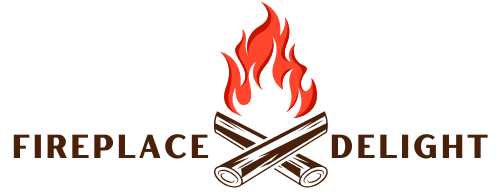A drafty fireplace can make your home feel colder instead of warmer, leading to heat loss, discomfort, and increased energy bills. If you notice cold air entering through the fireplace or uneven smoke movement, your fireplace likely needs adjustments. Fixing drafts not only improves efficiency but also enhances overall comfort and heat retention. Understanding the common causes of a drafty fireplace and applying the right solutions can help create a more effective and energy-efficient heating source.
Common Causes of a Drafty Fireplace
A fireplace draft is usually caused by structural or airflow issues. One of the most common reasons is an improperly sized or damaged damper, which fails to seal the chimney when the fireplace is not in use. Air leaks around the firebox or chimney can also let cold air in, while negative air pressure inside the home can force air down the chimney. Cracks or gaps in the chimney structure further contribute to unwanted airflow. Additionally, an unsealed chimney flue allows cold air to flow directly into the house, making the space feel colder rather than warmer.
How to Fix a Drafty Fireplace?
Check and Adjust the Damper
A fireplace damper controls airflow and prevents cold air from entering the home when the fireplace is not in use. Ensuring the damper is fully closed when the fireplace is idle is the first step in fixing drafts. If the damper is warped, rusted, or not sealing properly, repairing or replacing it can help. Installing a top-sealing damper offers a more effective solution, as it prevents air from escaping while also blocking cold drafts from coming in.
Seal Chimney and Firebox Gaps
Air leaks around the chimney or firebox contribute to drafts, making it essential to seal any cracks or openings. Using refractory caulk to seal small cracks around the firebox helps reduce airflow issues. Applying weatherproof sealant around the chimney structure can prevent external air from seeping inside. Installing glass fireplace doors provides an additional layer of insulation, effectively blocking drafts when the fireplace is not in use.
Improve Chimney Draft and Airflow
A poorly functioning chimney can create downdrafts, pulling cold air into the home. Checking for obstructions such as creosote buildup, debris, or nesting animals is crucial in maintaining proper airflow. Installing a chimney cap helps prevent downdrafts while also keeping out debris and moisture. If draft issues persist, extending the chimney height can improve airflow by creating a stronger upward draft, allowing smoke and warm air to exit efficiently.
Learn More: Plastering a Fireplace
Balance Air Pressure Inside the Home
Negative air pressure in the home can cause the fireplace to pull cold air down the chimney. To balance the airflow, slightly opening a nearby window when using the fireplace can help maintain even pressure. Installing a dedicated vent or air intake system ensures a continuous fresh air supply, reducing the likelihood of cold air being drawn in. Minimizing the use of exhaust fans, such as those in kitchens or bathrooms, can also prevent negative air pressure from affecting the fireplace draft.
Add Fireplace Insulation and Heat Retention Features
Improving insulation around the fireplace increases heat efficiency and prevents cold air from entering. Installing a fireplace insert provides better heat retention by trapping warm air inside the firebox. A chimney balloon can be used to block airflow when the fireplace is not in use, preventing drafts from coming through the chimney opening. Lining the chimney with an insulated flue liner further reduces heat loss, helping to maintain a warm and comfortable indoor environment.
When to Call a Professional?
If draft issues persist despite multiple fixes, consulting a professional is recommended. Structural chimney damage, significant air leaks, or issues requiring a full chimney liner replacement should be handled by a certified chimney expert. Annual fireplace and chimney inspections ensure safety, efficiency, and proper functionality, reducing the risk of long-term draft problems.
Conclusion
A drafty fireplace can make your home less comfortable and drive up energy costs, but simple adjustments can make a significant difference. Checking the damper, sealing air leaks, balancing airflow, and adding insulation all contribute to a more efficient and warm fireplace. Addressing these issues early helps maintain a cozy, functional heating source while improving overall home energy efficiency.
- Can You Install an Electric Fireplace Anywhere? - July 31, 2025
- 23 White Fireplace Ideas to Brighten Your Home - July 31, 2025
- How to Clean an Electric Fireplace TV Stand? - July 30, 2025



